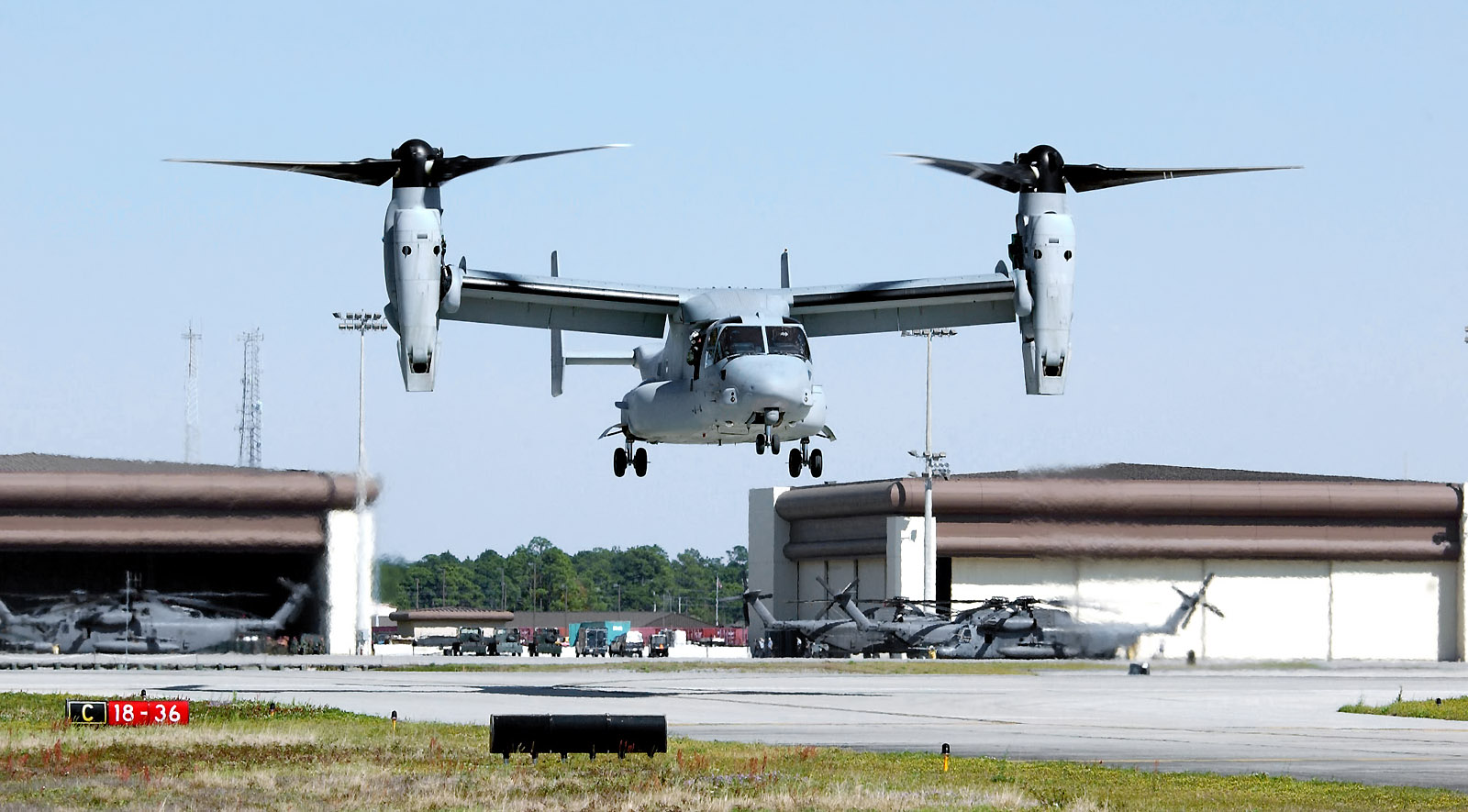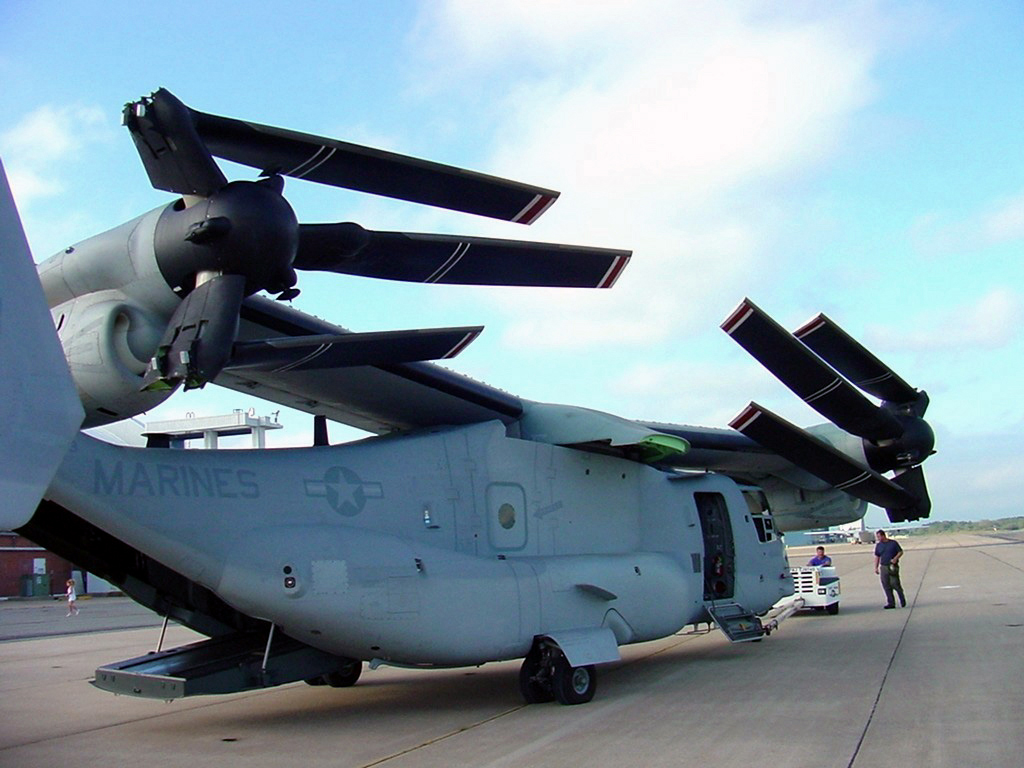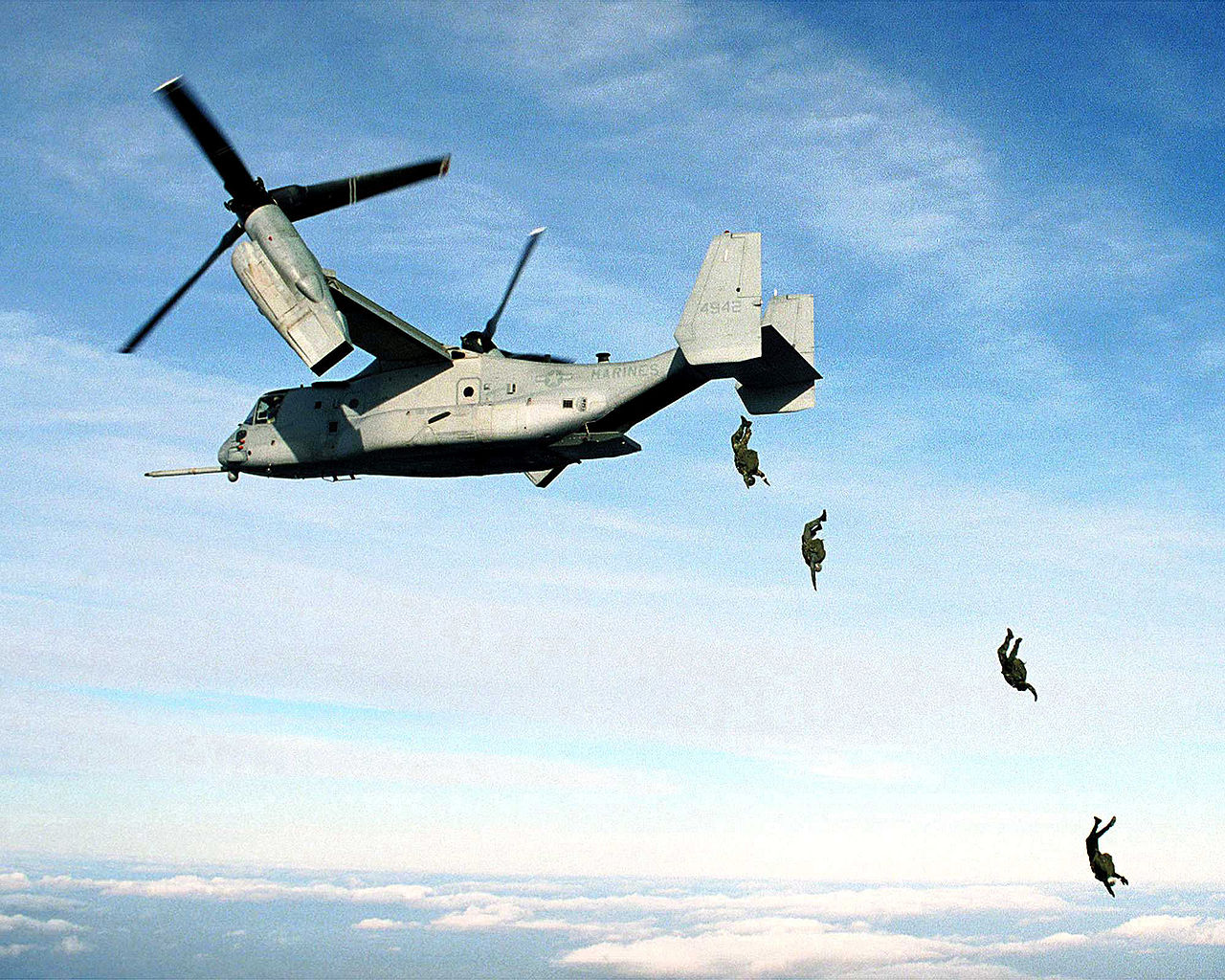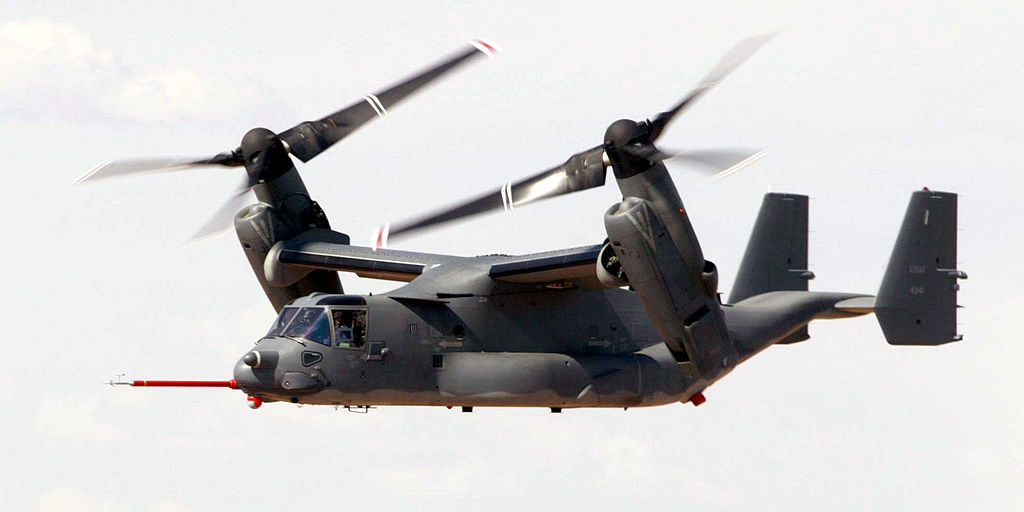The V-22 Osprey is a multipurpose military aircraft, classified as a convertiplane or tiltrotor aircraft, which has both vertical takeoff and landing (VTOL) and short takeoff and landing (STOL) capabilities. Osprey takes its nickname from the English name for osprey. It was designed to combine the functionality of a conventional helicopter with the high cruising speed and long range capabilities of a turboprop aircraft.
Although it has only been operational for a few years, its history is long and dates back to 1981, thanks to the Joint-service Vertical take-off/landing Experimental (JVX) aeronautical program of the United States Department of Defense. Two of the main helicopter development companies are in charge of facing the challenge of producing the first large-scale convertiplane for military use.

It was not until 1989 that the V-22 made its first flight, beginning its testing phase, in which it underwent different alterations in its design. Being the first vehicle of its type, it presented numerous difficulties and complexities that caused this phase to drag on for more years than expected. Finally, in the year 2000, it began its instruction phase with the training of Osprey crew members. Being 2007, the year in which it officially entered service in both the Air Force and the United States Marine Corps.
Although its cost is much higher than that of any equivalent helicopter, the great advantage of the V-22 Osprey is the versatility, range and flight autonomy it has thanks to its design. It has a nacelle with two turboshaft engines, which are connected by transmission to its two three-bladed propeller rotors mounted on each of the two wingtips, so that either of the two engines can drive the two propellers.

To take off, it works like a helicopter with the nacelles in a vertical position and, therefore, the propellers-rotors in a horizontal position. Once in the air, the nacelles rotate 90º forward in just 12 seconds to perform horizontal flight, turning the V-22 into something similar to an airplane and thus achieving greater speed and lower fuel consumption. Although if the nacelles rotate 45º forward it can also make short landings and takeoffs like a traditional airplane. Another advantage it has is that its wing can rotate to align with the main structure, just as its blades can be folded, so it can be stored and transported compactly.
NOW
The V-22 Osprey has become an essential troop transport for USAF and United States Marine Corps special forces commands. It has been seen in the theaters of operations in Iraq and Afghanistan, as well as in its bases in the United States.

Recently several V-22 Osprey units have been transferred to different NATO bases in the Mediterranean. Thus, they have been seen in bases such as Capodichino in Italy or Rota in Spain.

